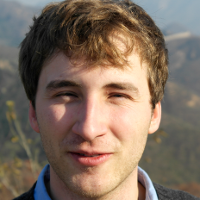Dissertation: Measuring Inner Source Collaboration (Dr. Maximilian Capraro)
Abstract: Inner source (IS) is the use of open source software development practices and the establishment of open source-like communities within an organization. The organization may still develop proprietary software but internally opens up its development. IS promises to resolve problems of traditional software development by easing software reuse and enabling parties within an organization to collaborate across organizational boundaries.
However, it is unclear what elements constitute IS (problem I) and how to measure the presence and magnitude of IS collaboration (problem II). The large majority of research articles on IS to date are limited to qualitative results regarding IS. There are yet no quantitative studies on IS collaboration exploring how much IS collaboration takes place or how IS practices affect it (problem III).
We followed a three-phase research approach to address these problems. First, we performed an extensive literature survey and analyzed 43 IS publications. We found that four key elements constitute IS (shared cultural values, open development environment, communities around software, IS-specific scenarios) but that IS programs and projects differ on at least five dimensions (addressing problem I).
Second, we developed the patch-flow method (and a software tool implementing it) for measuring IS collaboration. Patch-flow is the flow of code contributions across organizational boundaries (“silos”) such as organizational unit or cost center boundaries. We evaluated the method using case study research with a non-trivial industry organization and found it to be viable and useful to practitioners (addressing problem II).
Third, we performed a multiple-case case study with three large software organizations running a total of five IS program. We identified the used IS practices and the resulting patch-flow. We found patch-flow to exist in all organizations but that only fraction of all code contributions to IS projects constitute patch-flow. We observed that the number of IS practices implemented correlates with the distance of parties involved in collaboration. This indicates that IS is particularly suited to enable collaboration between parties of high distance in an organization (addressing problem III).
This thesis delivers a holistic definition of IS and the first classification framework for IS programs and projects. Researchers can use such a framework to reason about generalizability of their results more precisely. The patch-flow measurement method is the first of its kind to measure and quantify IS collaboration and can serve as a base for further quantitative analyses of IS collaboration. The exploration of the patch-flow in the three industry cases can serve as example and benchmark for practitioners.
Keywords: Inner Source; Open Source; Software Development Collaboration; Software Engineering
Reference: Capraro, M. (2020). Measuring Inner Source Collaboration. Friedrich-Alexander-University Erlangen-Nuremberg.
Committee: Dirk Riehle (1st reader, Univ. Erlangen), Brian Fitzgerald (2nd reader, University of Limerick), Georg Fischer (committee member, Univ. Erlangen), Richard Lenz (chair, Univ. Erlangen).
PDF: Dissertation.

